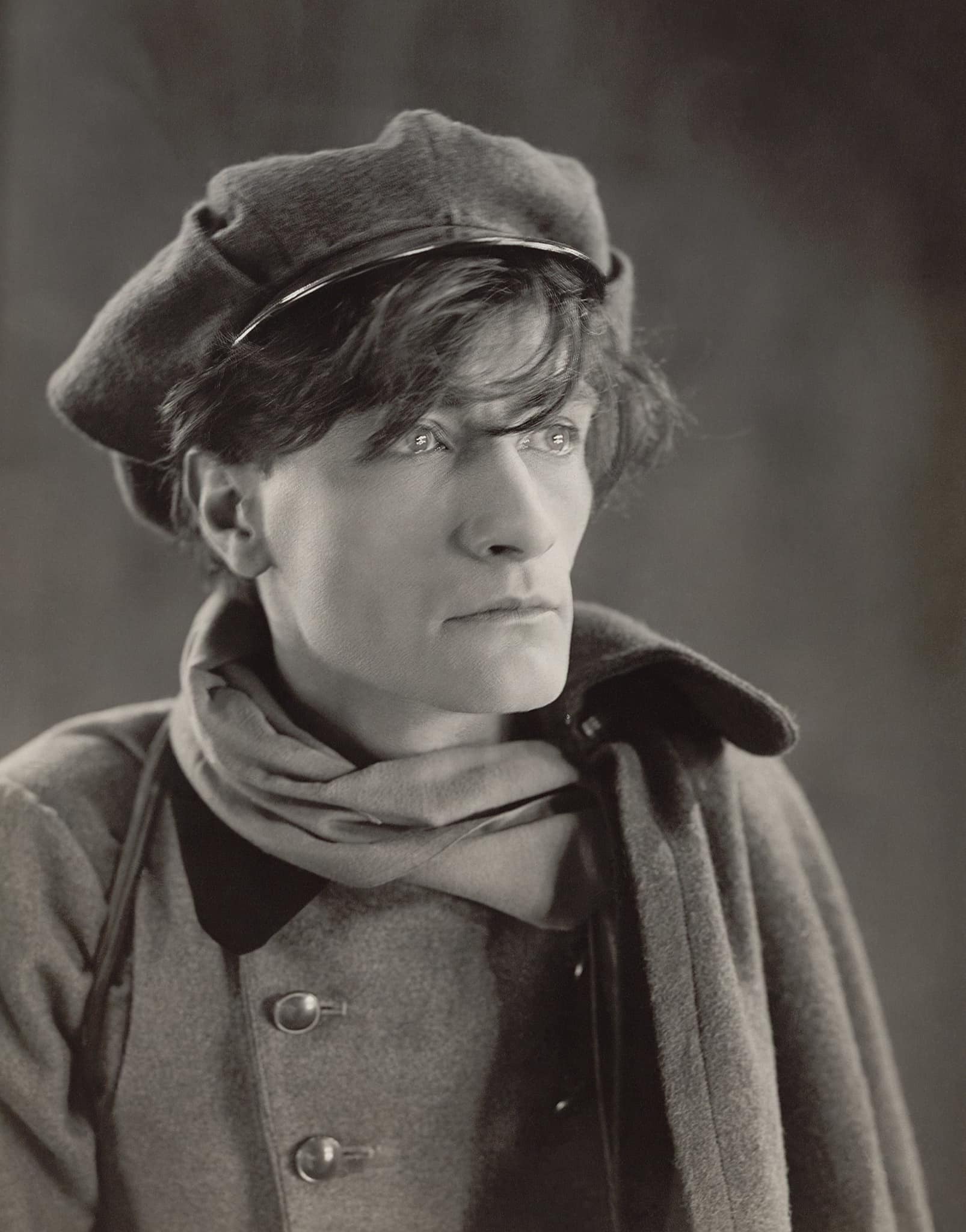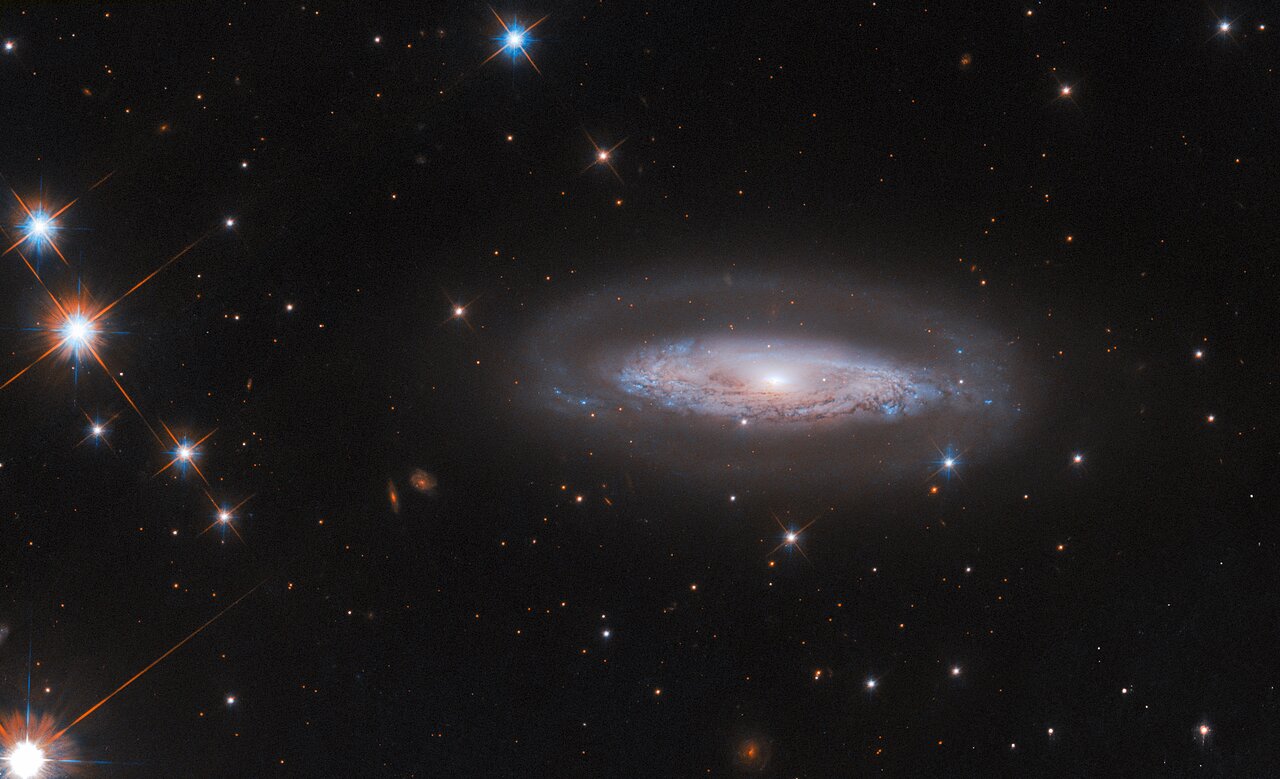Blog
David Liebman (born September 4, 1946 Brooklyn, NY) is an American saxophonist, flautist and jazz educator. He is known for his innovative lines and use of atonality. He was a frequent collaborator with pianist Richie Beirach.
In June 2010, he received a NEA Jazz Masters lifetime achievement award from the National Endowment for the Arts (NEA). David Liebman was born in 1946 into a Jewish family in Brooklyn, New York. As a child in 1949, he contracted polio.
more...
Anderson Meade “Lux” Lewis (September 4, 1905 – June 7, 1964) was an American pianist and composer, remembered for his playing in the boogie-woogie style. His best-known work, “Honky Tonk Train Blues“, has been recorded by many artists.
Lewis was born in Chicago, though some sources state Louisville, Kentucky, on September 4, 1905 (September 3 and 13 have also been cited as his date of birth in sources). In his youth he was influenced by the pianist Jimmy Yancey.
more...Darius Milhaud (French: [daʁjys mijo]; 4 September 1892 – 22 June 1974) was a French composer, conductor, and teacher. He was a member of Les Six—also known as The Group of Six—and one of the most prolific composers of the 20th century. His compositions are influenced by jazz and Brazilian music and make extensive use of polytonality. Milhaud is considered one of the key modernist composers. A renowned teacher, he taught many future jazz and classical composers, including Burt Bacharach, Dave Brubeck, Philip Glass, Steve Reich, Karlheinz Stockhausen and Iannis Xenakisamong others.
more...
Although the shape is unusual, the type of structure is not: it is part of an evolving solar prominence. Looping magnetic fields on the Sun channel the flow of energetic particles, sometimes holding glowing gaseous structures aloft for months. A prominence glows brightly because it contains particularly hot, dense, or opaque solar plasma. The surprising triangular structure occurred last week. Larger than our Earth, the iconic prominence was imaged by several solar photographers and documented by NASA’s Solar Dynamic Observatory to form and violently dissipate in about a day. The featured image was captured in a color of red light emitted strongly by hydrogen. Below, solar fibrils carpet the Sun’s chromosphere, while the background sky is so faint in comparison that no stars are visible. Our Sun’s surface has been quite active this year.

more...
Dorothy Masuka (3 September 1935 – 23 February 2019) was a Zimbabwe-born South African jazz singer.
Masuka’s music was popular in South Africa throughout the 1950s, but when her songs became more serious, the government began questioning her. Her song “Dr. Malan,” mentioning difficult laws, was banned and in 1961 she sang a song for Patrice Lumumba, which led to her exile. This exile lasted 31 years in total during which she lived in Zambia and worked as a flight attendant. She returned to Zimbabwe in 1980 after independence.
In August 2011, Dorothy Masuka and Mfundi Vundla, creator of the popular South African soap opera Generations, confirmed plans to make a film of Masuka’s life. The film would concentrate on the years 1952 to 1957.
On 27 April 2017 she featured in the concert “The Jazz Epistles featuring Abdullah Ibrahim & Ekaya,” at The Town Hall, New York City, opening the show and delivering “one passionate performance after another, warming up and winning over the crowd”.
Dorothy Masuka died in Johannesburg on 23 February 2019, at the age of 83.
more...Granville William “Mickey” Roker (September 3, 1932 – May 22, 2017) was an American jazz drummer.
Roker was born into extreme poverty in Miami to Granville (Sr.) and Willie Mae Roker. After his mother died (his father never lived with them), when he was only ten, he was taken by his grandmother to live in Philadelphia with his uncle Walter, who gave him his first drum kit and communicated his love of jazz to his nephew. He also introduced the young Roker to the jazz scene in Philadelphia, where drummer Philly Joe Jonesbecame Roker’s idol.
In the early 1950s, he began to gain recognition as a sensitive yet hard-driving big-banddrummer. He was especially favored by Dizzy Gillespie, who remarked of him that “once he sets a groove, whatever it is, you can go to Paris and come back and it’s right there. You never have to worry about it.”[4] Roker was soon in demand for his supportive skills in both big-band and small-group settings.
While in Philadelphia he played with Jimmy Oliver, Jimmy Heath, Jimmy Divine, King James and Sam Reed before moving to New York in 1959, where his first gigs were with Gigi Gryce, Ray Bryant, Joe Williams, Junior Mance, Nancy Wilson and the Duke Pearson big band.
In 1965 Mickey joined Art Farmer and Benny Golson’s revamped group, the “New York Jazz Sextet”.
In 1992, he replaced Connie Kay in the Modern Jazz Quartet.
He recorded with Dizzy Gillespie, Sonny Rollins, Duke Pearson, Tommy Flanagan, Ella Fitzgerald, Zoot Sims, Horace Silver, Junior Mance, Sarah Vaughan, Milt Jackson, Herbie Hancock, Phil Woods, Oscar Peterson, Ray Brown, Bucky Pizzarelli, Stanley Turrentine, Toshiko Akiyoshi, Hank Jones, Bobby Hutcherson, Joe Locke, and many other jazz musicians.
more...Freddie King (September 3, 1934 – December 28, 1976) was an American bluesguitarist, singer and songwriter. He is considered one of the “Three Kings of the Blues Guitar” (along with Albert King and B.B. King, none of whom was a blood relative).Mostly known for his soulful and powerful voice and distinctive guitar playing, King had a major influence on electric blues music and on many later blues guitarists.
Born in Gilmer, Texas, King became acquainted with the guitar at the age of six. He started learning the guitar from his mother and his uncle. King moved to Chicago when he was a teenager; there he formed his first band the Every Hour Blues Boys with guitarist Jimmie Lee Robinson and drummer Frank “Sonny” Scott. As he was repeatedly being rejected by Chess Records, he got signed to Federal Records, and got his break with single “Have You Ever Loved a Woman” and instrumental “Hide Away“, which reached number five on the Billboard magazine’s rhythm and blues chart in 1961. It later became a blues standard. King based his guitar style on Texas blues and Chicago bluesinfluences. The album Freddy King Sings showcased his singing talents and included the record chart hits “You’ve Got to Love Her with a Feeling” and “I’m Tore Down”.[3] He later became involved with producers who were more oriented to rhythm and blues and rock and was one of the first bluesmen to have a multiracial backing band at performances.
He was inducted into the Rock and Roll Hall of Fame by ZZ Top in 2012 and into the Blues Hall of Fame in 1982. His instrumental “Hide Away” was included in the Rock and Roll Hall of Fame’s list of “500 Songs that Shaped Rock“. He was ranked 19th in the Rolling Stone magazine’s 2023 edition of 250 greatest guitarists of all time.
more...John Len Chatman (September 3, 1915 – February 24, 1988 Memphis, TN), known professionally as Memphis Slim, was an American blues pianist, singer, and composer. He led a series of bands that, reflecting the popular appeal of jump blues, included saxophones, bass, drums, and piano. A song he first cut in 1947, “Every Day I Have the Blues“, has become a blues standard, recorded by many other artists. He made over 500 recordings. He was posthumously inducted into the Blues Hall of Fame in 1989.
more...The Hubble Space Telescope has a lot to show in this week’s Picture of the Week. Its view here is studded with stars, many of which appear particularly large and bright thanks to their nearby locations in our own galaxy, and which feature the characteristic diffraction patterns caused by Hubble’s optics. Much further away — around 240 million light-years distant, in fact, in the southern constellation Telescopium — is the spiral galaxy IC 4709. Its swirling disc filled with stars and dust bands is beautifully captured, as is the faint halo surrounding it. The compact region at its core might be the most remarkable sight, however: this is an active galactic nucleus (AGN).
If IC 4709’s core were just filled with stars, it would not be nearly so bright. Instead it hosts a gargantuan black hole, 65 million times the mass of our Sun. A disc of gas spirals around and eventually into this black hole, with the gas crashing together and heating up as it spins. It reaches such high temperatures that it emits vast quantities of electromagnetic radiation, from infrared to visible to ultraviolet light and beyond — in this case including X-rays. The AGN in IC 4709 is obscured by a lane of dark dust, just visible at the centre of the galaxy in this image, which blocks any optical emission from the nucleus itself. Hubble’s spectacular resolution, however, gives astronomers a detailed view of the interaction between the quite small AGN and its host galaxy. This is essential to understanding supermassive black holes in galaxies much more distant than IC 4709, where resolving such fine details is not possible.
This image incorporates data from two Hubble surveys of nearby AGNs that were identified by the Swift X-ray/UV telescope, as does the image from last week. Swift will collect new data on these galaxies — with an X-ray telescope, it’s possible to directly see the X-rays from IC 4709’s AGN breaking through the obscuring dust. ESA’s Euclid telescope — currently surveying the dark Universe in optical and infrared light — will also image IC 4709 and other local AGNs. The complementary use of space telescopes across the electromagnetic spectrum is key to fully researching black holes and their impact on their host galaxies.
[Image Description: A spiral galaxy is situated right of centre. It has a white, brightly-shining core, a glowing disc which is thick with swirling patterns of dark dust, and a faint halo around the disc. It is on a black background with some small, distant galaxies and some foreground stars around it. Six stars along the left side appear particularly large and bright, with two opposing sets of spikes surrounding each one.]

William Everett Preston (September 2, 1946 – June 6, 2006) was an American keyboardist, singer and songwriter whose work encompassed R&B, rock, soul, funk, and gospel. Preston was a top session keyboardist in the 1960s, backing Little Richard, Sam Cooke, Ray Charles, the Everly Brothers, Reverend James Cleveland, the Beatlesand the Rolling Stones. He gained attention as a solo artist with hit singles “That’s the Way God Planned It“, the Grammy-winning “Outa-Space“, “Will It Go Round in Circles“, “Space Race“, “Nothing from Nothing“, and “With You I’m Born Again“. Additionally, Preston co-wrote “You Are So Beautiful“, which became a No. 5 hit for Joe Cocker.
Preston is one of very few musicians to be given a credit on a Beatles recording, which was done at the band’s request; the group’s 1969 single “Get Back” was credited as “The Beatles with Billy Preston”. He continued to record and perform with George Harrison after the Beatles’ breakup, along with other artists such as Eric Clapton and the Rolling Stones on many of the group’s albums and tours during the 1970s. Preston was inducted into the Rock and Roll Hall of Fame in the Musical Excellence Award category in 2021.
more...Laurindo Almeida (September 2, 1917 – July 26, 1995) was a Brazilian guitarist and composer in classical, jazz, and Latin music. He was one of the pioneers in the creation of bossa nova. Almeida was the first guitarist to receive Grammy Awards for both classical and jazz performances. His discography encompasses more than a hundred recordings over five decades. Laurindo Jose de Araujo Almeida Nobrega Neto was born in the village of Prainha, Brazil near Santos in the state of São Paulo.
Born into a musical family, Almeida was a self-taught guitarist. During his teenage years, Almeida moved to São Paulo, where he worked as a radio artist, staff arranger and nightclub performer. At the age of 19, he worked his way to Europe playing guitar in a cruise ship orchestra. In Paris, he attended a performance at the Hot Club de France by Stéphane Grappelli and famed guitarist Django Reinhardt, who became a lifelong artistic inspiration.
Returning to Brazil, Almeida continued composing and performing. He became known for playing both classical Spanish and popular guitar. He moved to the United States in 1947; a trip financed when one of his compositions, a song known as “Johnny Peddler” became a hit recorded by the Andrews Sisters. In Los Angeles, Almeida immediately went to work in film studio orchestras.
more...Clifford Laconia Jordan (September 2, 1931 – March 27, 1993) was an American jazz tenor saxophone player. While in Chicago, he performed with Max Roach, Sonny Stitt, and some rhythm and blues groups. He moved to New York City in 1957, after which he recorded three albums for Blue Note. He recorded with Horace Silver, J.J. Johnson, and Kenny Dorham, among others. He was part of the Charles Mingus Sextet, with Eric Dolphy, during its 1964 European tour.
Jordan toured Africa with Randy Weston, and performed in Paris while living in Belgium. In later years, he led his own groups, performed with Cedar Walton‘s quartet Eastern Rebellion, and led a big band.
Jordan was married to Shirley Jordan, a designer and former owner of The Clothes Gallery in New York. He later married Sandy Jordan (née Williams), a graphic artist and Honorary Founders Board member of the Jazz Foundation of America.
more...Horace Ward Martin Tavares Silver (September 2, 1928 – June 18, 2014) was an American jazz pianist, composer, and arranger, particularly in the hard bop style that he helped pioneer in the 1950s.
After playing tenor saxophone and piano at school in Connecticut, Silver got his break on piano when his trio was recruited by Stan Getz in 1950. Silver soon moved to New York City, where he developed a reputation as a composer and for his bluesy playing. Frequent sideman recordings in the mid-1950s helped further, but it was his work with the Jazz Messengers, co-led by Art Blakey, that brought both his writing and playing most attention. Their Horace Silver and the Jazz Messengers album contained Silver’s first hit, “The Preacher“. After leaving Blakey in 1956, Silver formed his own quintet, with what became the standard small group line-up of tenor saxophone, trumpet, piano, bass, and drums. Their public performances and frequent recordings for Blue Note Records increased Silver’s popularity, even through changes of personnel. His most successful album was Song for My Father, made with two iterations of the quintet in 1963 and 1964.
Several changes occurred in the early 1970s: Silver disbanded his group to spend more time with his wife and to concentrate on composing; he included lyrics in his recordings; and his interest in spiritualism developed. The last two of these were often combined, resulting in commercially unsuccessful releases such as The United States of Mindseries. Silver left Blue Note after 28 years, founded his own record label, and scaled back his touring in the 1980s, relying in part on royalties from his compositions for income. In 1993, he returned to major record labels, releasing five albums before gradually withdrawing from public view because of health problems.
As a player, Silver transitioned from bebop to hard bop by stressing melody rather than complex harmony, and combined clean and often humorous right-hand lines with darker notes and chords in a near-perpetual left-hand rumble. His compositions similarly emphasized catchy melodies, but often also contained dissonant harmonies. Many of his varied repertoire of songs, including “Doodlin’“, “Peace“, and “Sister Sadie“, became jazz standards that are still widely played. His considerable legacy encompasses his influence on other pianists and composers, and the development of young jazz talents who appeared in his bands over the course of four decades.
more...More Posts
- The Cosmos with NGC 317
- Carly Simon Day
- Joe Chambers Day
- Clifton Chenier Day
- Johnny Smith Day
- World Music with Moonlight Benjamin
- Daily Roots with Admiral Tibet
- UFO Sighting June 24th 1947
- Music for Surviving the Pandemic and Realizing Racial Justice
- The Cosmos with NGC 4100
- Derrick “Duckie” Simpson Day
- Mick Fleetwood Day
- Jeff Beck Day
- Terry Riley Day
- Lester Williams Day
- World Music with Jaliba Kuyateh
- Daily Roots with Marlon Asher
- Music for Surviving the Pandemic and Realizing Racial Justice
- The Cosmos with the Milky Way from eROSITA
- June Carter Day

